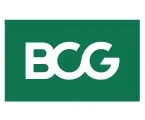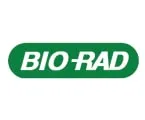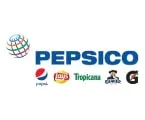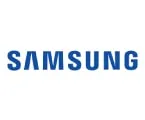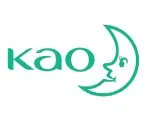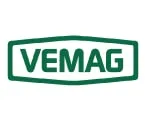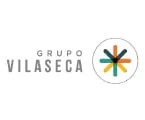The Dairy Products Market is expected to reach $1,167.93 billion by 2032, at a CAGR of 4.7% from 2025 to 2032.
Dairy Products Market Size & Forecast
The growth of this market can be attributed to several factors, including the growing population and changing consumption habits, increasing per capita consumption of fresh dairy products, rising consumer awareness towards nutritional food, and increasing milk production. Moreover, growing technological advancements in the dairy industry and emerging economies are expected to offer growth opportunities for the players operating in this market.

Click here to: Get Free Sample Pages of this Report
Dairy Products Market Growth Drivers
Growing Population and Changing Consumption Habits
The global population is rapidly increasing, with the Population Reference Bureau (PRB) projecting an annual growth of 75 million people, or 1.1% per year. By 2050, the world population is expected to reach 9.9 billion, a 33% increase from 7.4 billion in 2017. This population growth drives a higher demand for food, including dairy products.
As urbanization intensifies with the growing population, personal incomes typically rise, leading to increased consumption of dairy products. This shift is reflected in changing dietary habits, with a greater emphasis on healthy, diverse food options. Consequently, per capita consumption of milk and milk products has seen a significant uptick.
Dairy products are valued for their high-quality protein and essential micronutrients. With the expanding global population and heightened demand for nutritious foods, milk, and dairy products are poised to become even more prominent sources of protein. This trend is set to further accelerate the growth of the dairy products market.
Rising Consumer Awareness Towards Nutritional Food
In recent years, the rise of nutritional foods has played a key role in promoting healthy habits, driven by growing consumer concern about health and the perception that diet directly impacts well-being. According to a study funded by the NIH, a healthy diet significantly improves overall health and reduces mortality rates from heart disease, stroke, and type 2 diabetes. The continuously increasing global population and improved welfare have heightened the demand for nutritional food.
The high-nutrition trend is gaining traction and is expected to continue to evoke interest in the coming years. Consumers are becoming more aware of the benefits of protein and other nutrients in supporting an active lifestyle. Dairy foods are perceived as wholesome options, providing essential nutrients like protein, calcium, and vitamins in an easily digestible form. Additionally, dairy products like yogurt and kefir contain probiotics that support gut health.
Due to these nutritional benefits, consumers worldwide regularly include milk and milk products in their diets, driving high demand and contributing to the growth of the dairy products market.
Get focused insights within your budgets.
Personalize this report and get cost benefits!
Talk to Us
Dairy Products Market Trends
Increasing Demand for Organic Milk
Organic milk products are gaining significant traction in the food industry, driven by increasing consumer awareness of their health benefits and the rising concerns over the adverse effects of conventional milk. Organic milk is produced without synthetic chemicals, antibiotics, or hormones, making it a healthier alternative. As consumers become more conscious of the potential harmful effects of synthetic pesticides, hormones, and antibiotics used in conventional dairy farming, they are shifting towards organic options. For example, certain antibiotics like chloramphenicol can cause severe side effects, such as bone marrow aplasia, gray baby syndrome, and aplastic anemia, when ingested through contaminated milk.
Moreover, organic milk and milk products offer various benefits, including 25% less omega-6 fatty acids and 62% more omega-3 fatty acids compared to conventional milk. They also have higher antioxidant and mineral content and a longer shelf life. This increasing preference for organic milk and milk products is a prominent trend that positively influences the dairy products market.
Increasing Awareness of Health & Wellness
Consumers are increasingly focusing on living longer and healthier lives, leading to a shift towards natural, additive-free, preservative-free, and organic foods. This focus on well-being has become a global movement, as people seek to ensure healthy lives for as long as possible, particularly with rising average lifespans. Eating healthier foods is seen as a preventive measure to avoid future healthcare costs.
In response to the growing demand for healthy foods, dairy products are gaining traction in the market. They play a vital role in a balanced diet due to their rich calcium content, which supports bone health and development. Additionally, dairy products are packed with essential vitamins and minerals, including vitamin B12, riboflavin, niacin, vitamin A, phosphorus, and potassium, which contribute to overall health and well-being. These comprehensive nutritional benefits make dairy products an important part of a balanced and healthy diet.
Dairy Products Market Opportunity
Growing Technological Advancements in Dairy Industry
Globally, significant technological advancements have revolutionized the dairy industry in recent years. Modern technology has dramatically transformed dairy farm operations, emphasizing increased productivity, sustainability, and efficiency. Automation and technology have ushered in a wave of change in dairy industry management. Innovations such as automated milking systems, data-driven decision-making, precision feeding, and advanced milk processing equipment have made the industry more efficient, sustainable, and profitable.
Furthermore, advances in non-thermal technologies like cold plasma, ultrasonication, pulsed electric fields, high-pressure processing (HPP), and membrane filtration have shown promise in producing shelf-stable dairy products while maintaining their nutritional values. Automation has also enhanced tasks such as cleaning, pasteurization, and packaging, improving efficiency and consistency and resulting in higher-quality products. Consequently, ongoing technological advancements are expected to boost milk production and processing capabilities, creating new opportunities for manufacturers in the dairy market.
Dairy Products Market Analysis: Key Findings
By Type: In 2025, the Milk Segment to Dominate the Dairy Products Market
Based on type, the dairy products market is segmented into milk, cheese, butter, dessert, yogurt, and other dairy products. In 2025, the milk segment is expected to account for the largest share of 59% of the dairy products market. The large market share of this segment can be attributed to factors such as rising population, increasing production of milk, growing awareness regarding the nutritional benefits, high consumption of milk in every household as a staple food item, easy availability, and increasing use in culinary purposes.
However, the cheese segment is projected to witness the highest growth rate of 5.2% during the forecast period of 2025–2032. This growth is driven by the increasing awareness regarding the nutritional benefits of cheese as its calcium, protein, and vitamin content; growing popularity of fast-food items like burgers, pizzas, and sandwiches; increasing demand for ready-to-eat food products; growing popularity of western cuisines; and increasing demand for flavored cheese products.
By Category: In 2025, the Lactose Segment to Dominate the Dairy Products Market
Based on category, the dairy products market is segmented into lactose and lactose-free. In 2025, the lactose segment is expected to account for the larger share of the dairy products market. The large market share of this segment can be attributed to several factors: the high consumption of lactose-based dairy products, their role as energy providers, their potential prebiotic effect, which promotes the growth of beneficial gut bacteria, and their assistance in the absorption and utilization of other essential nutrients in dairy products, such as calcium and vitamins.
However, the lactose-free segment is projected to witness the highest growth rate during the forecast period of 2025–2032. This growth is driven by the rising health concerns, increasing prevalence of lactose intolerance, increasing preferences for healthier diets, high availability of lactose-free dairy products with increasing product launches by manufacturers, and increasing demand for lactose-free milk, yogurt, cheese, and other dairy products.
By Animal Source: The Cow Segment to Witness Highest Demand During the Forecast Period
Based on animal source, the dairy products market is segmented into cow, buffalo, goat, and others. In 2025, the cow segment is expected to account for the largest share of 81.2% of the dairy products market. The significant market share of this segment can be attributed to the widespread availability of cow milk, facilitated by the high proportion of cow and buffalo rearing. Additionally, cow milk is highly favored by consumers due to its numerous health benefits. It is preferred for its higher water content compared to other types of milk, which aids in easy digestibility owing to lower levels of proteins and fats. These factors collectively contribute to the continued growth of the market.
By Nature: In 2025, the Conventional Segment to Dominate the Dairy Products Market
Based on nature, the dairy products market is segmented into conventional and organic. In 2025, the conventional segment is expected to account for the larger share of the dairy products market. The large market share of this segment can be attributed to the higher adoption of conventional dairy products due to their easy and cost-effective accessibility, growing need to fulfill the food demand of growing population, increasing demand for processed dairy food products, and easy availability of these food products.
However, the organic segment is projected to witness the highest growth rate during the forecast period of 2025–2032. This growth is driven by rising spending on premium food products, growing health awareness, an increasing trend for clean-label foods, and the increasing availability of organic dairy food products in the market. Further, the increasing prevalence of cancer due to the presence of antibiotic residues in milk food given during animal treatment is supporting the growth of the market.
By Distribution Channel: In 2025, the Supermarket Segment to Dominate the Dairy Products Market
Based on distribution channel, the dairy products market is segmented into supermarkets, hypermarkets, discounters, specialty stores, online retail, and other distribution channels. In 2025, the supermarkets segment is expected to account for the largest share of 35.1% of the dairy products market. The large market share of this segment can be attributed to several factors: the increasing preference for a one-stop shopping experience, clean and comfortable environments, extended opening hours, a much wider selection of household items, and increased shelf space for dairy products.
However, the online retail segment is projected to witness the highest growth rate of 5.3% during the forecast period of 2025–2032.
Geographical Analysis
Asia-Pacific Dominates the Overall Diary Foods Market
Based on geography, the dairy products market is majorly segmented into five regions: North America, Europe, Asia-Pacific, Latin America, and the Middle East & Africa. In 2025, Asia-Pacific is expected to account for the largest share of 40.5% of the dairy products market, followed by Europe and North America. Asia-Pacific's significant market share can be attributed to several key factors, including the huge milk production in the countries including India and China, the developed dairy industry, rising population, increasing consumer disposable income, the high presence of local and multinational manufacturers, and increasing government initiative for animal husbandry and dairy industry.
Moreover, this region is also slated to register the highest growth rate of 5.1% during the forecast period due to the increasing consumer demand for processed food products, growing foreign investment, increasing demand for western dairy products such as yogurt, sour milk, etc., and technological advancements in dairy processing.
Dairy Products Market: Key Companies
The report offers a competitive analysis based on an extensive assessment of the leading players’ product portfolios, geographic presence, and key growth strategies adopted in the last 3–4 years. Some of the key players operating in the dairy products market are Arla Foods Group (Denmark), Nestlé S.A. (Switzerland), Danone S.A. (France), Lactalis Group (France), Fonterra Co-operative Group Limited (New Zealand), The Kraft Heinz Company (U.S.), DMK Group (Germany), Gujarat Co-operative Milk Marketing Federation Limited (GCMMF) (India), Dairy Farmers of America, Inc. (U.S.), Meiji Holdings Co., Ltd. (Japan), Royal FrieslandCampina N.V. (Netherlands), Saputo Inc. (Canada), Inner Mongolia Yili Industrial Group Co., Ltd. (China), China Mengniu Dairy Company Limited (China), Emmi Schweiz AG (Switzerland), and Hatsun Agro Product Ltd (India).
Dairy Products Industry Overview: Latest Developments from Key Industry Players
- In March 2025, the Gujarat Co-operative Milk Marketing Federation (GCMMF) (India) launched fresh milk in the U.S. in partnership with the Michigan Milk Producers Association (MMPA) and is planning to introduce various dairy products.
- In November 2024, Nestlé S.A. (Switzerland) launched N3 milk in China, which contains prebiotic fibers, low lactose content, and 15% fewer calories.
- In February 2024, First Milk (U.K.) acquired B V Dairy (U.K.), a producer of chilled dairy products.
- In July 2022, Arla Foods Group (Denmark) invested EUR 210 million in its Taw Valley site in the U.K. to advance production technology for mozzarella production.
Need data on specific countries or regions?
Customize this report for countries of interest.
Dairy Products Market Research Summary
|
Particulars
|
Details
|
|
Number of Pages
|
~195
|
|
Format
|
PDF
|
|
Forecast Period
|
2025–2032
|
|
Base Year
|
2024
|
|
CAGR (Value)
|
4.7%
|
|
Market Size (Value)
|
USD 1,167.93 Billion by 2032
|
|
Segments Covered
|
By Type
- Milk
- Cheese
- Butter
- Dessert
- Yogurt
- Other Dairy Products
By Category
By Animal Source
By Nature
By Distribution Channel
- Supermarkets
- Hypermarkets
- Discounters
- Specialty Stores
- Online Retail
- Other Distribution Channels
|
|
Countries Covered
|
North America (U.S., Canada), Europe (Germany, France, U.K., Italy, Spain, Russia, and Rest of Europe), Asia-Pacific (China, India, Japan, Australia, New Zealand, Indonesia, and Rest of Asia-Pacific), Latin America (Brazil, Argentina, Mexico, and Rest of Latin America), and the Middle East & Africa
|
|
Key Companies
|
Arla Foods Group (Denmark), Nestlé S.A. (Switzerland), Danone S.A. (France), Lactalis Group (France), Fonterra Co-operative Group Limited (New Zealand), The Kraft Heinz Company (U.S.), DMK Group (Germany), Gujarat Co-operative Milk Marketing Federation Limited (GCMMF) (India), Dairy Farmers of America, Inc. (U.S.), Meiji Holdings Co., Ltd. (Japan), Royal FrieslandCampina N.V. (Netherlands), Saputo Inc. (Canada), Inner Mongolia Yili Industrial Group Co., Ltd. (China), China Mengniu Dairy Company Limited (China), Emmi Schweiz AG (Switzerland), and Hatsun Agro Product Ltd (India)
|
Key questions answered in the dairy products market report:



